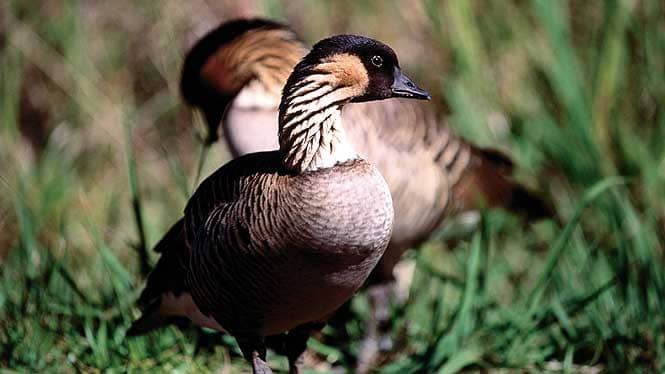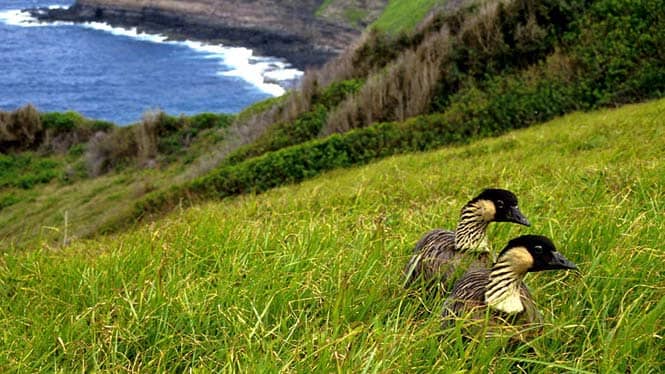Struggling Against Extinction
The Nene has endured a long struggle against extinction. During the 1940s, this beautiful species was almost wiped out by-laws which allowed the birds to be hunted during their winter breeding seasons when the birds were the most vulnerable.
Tip: Don’t feed the Nene.
By 1957, when the Nene was named Hawaii’s State Bird, rescue efforts were underway. Conservationists began breeding the birds in captivity in hopes of preserving a remnant of the declining population and, someday, successfully re-establishing them in their native habitat.
Early programs for returning captive-bred birds to the wild proved difficult, but recent efforts have been very successful. There are now small but stable populations of Nene on the islands of Hawai’i, Maui, and Kaua’i.
According to the Hawai’i Audubon Society, the Nene, currently on the Federal List of Endangered Species, is threatened today by introduced mongooses and feral dogs and cats which relentlessly prey upon the Nene’s eggs and young. Preservation efforts are continuing and the success of the Nene in Hawai’i, although not a certainty, is promising. There are now about 800 wild Nene in Hawai’i and the numbers are rising with each breeding season.
Appearance

Somewhat similar in appearance to a Canada Goose except for only the face, cap, and hindneck are black; and Nene has buff-colored cheeks. The front and sides of the neck appear to have black and white stripes. This is caused by diagonal rows of white feathers with black skin showing through. Males and females have identical plumage. It is also interesting to note that the dusty black feet of this goose is not completely webbed as in all other geese. Usually smaller than the Canada Goose (25″ to 43″), the Nene ranges in size from approximately 21″ to 26″ inches in length.
A variety of calls have been heard and described, mostly soft and apparently conversational in nature. The loudest and most commonly recognized call is very similar to that of the Canada Goose, a resonant “honk” or “ha-wah.”
The Nene feeds on both native and introduced plants in the grasslands and slopes where it lives. The breeding season runs through the winter months, typically between November and March.
Populations

Wild Nene populations can be seen in Hawai’i Volcanoes National Park, Mauna Loa, and Pu’u Wa’awa’a on the island of Hawai’i; in Haleakala National Park on Maui, and at the Kilauea National Wildlife Refuge, along the Na Pali Coast, and outside Lihue on Kaua’i. Captive Nene can be seen at the Honolulu Zoo.
